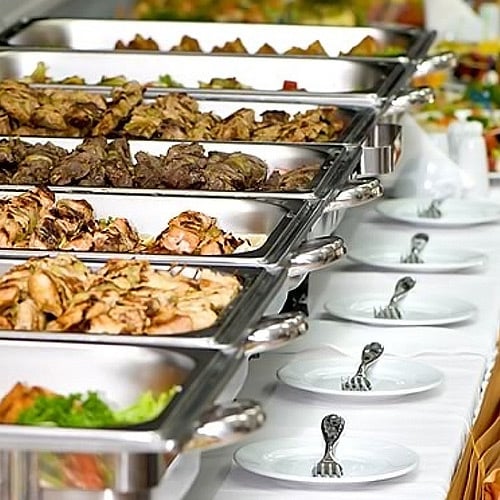Corporate Event Catering Services – The Perfect Recipe for Business Success
Corporate event catering services play a pivotal role in shaping the success of business gatherings, from small meetings to large conferences. The perfect recipe for business success often hinges on meticulous planning, seamless execution, and unforgettable culinary experiences. Here is how catering services contribute to creating impactful corporate events. First and foremost, impression is everything in the corporate world. A well-executed catering service can leave a lasting impression on clients, partners, and employees alike. Imagine walking into a conference room filled with the aroma of freshly brewed coffee and beautifully presented breakfast spreads. Such attention to detail not only enhances the overall ambiance but also sets a positive tone for the entire event. From elegant plated dinners to interactive food stations, professional caterers understand the importance of aligning culinary offerings with the event’s objectives. Professionalism is another key ingredient that catering services bring to corporate events. Experienced caterers are adept at handling diverse dietary preferences and restrictions, ensuring that all attendees are catered to with care and respect.

This level of professionalism extends beyond just the food it encompasses prompt service, impeccable presentation, and the ability to adapt to last-minute changes seamlessly. For busy professionals organizing events, knowing that the catering is in capable hands provides peace of mind and allows them to focus on other critical aspects of event management. Moreover, customization plays a crucial role in tailoring the catering experience to meet specific corporate needs. Whether the event calls for a formal sit-down dinner to celebrate a milestone or a casual networking cocktail hour, caterers work closely with event planners to curate menus that reflect the company’s ethos and the event’s purpose. This customization extends not only to the menu selection but also to the presentation style, ensuring that every detail aligns with the desired corporate image and event theme. Beyond the culinary delights, efficiency is a hallmark of successful corporate event catering services. Timely setup, seamless service during the event, and efficient cleanup afterward are essential elements that professional caterers excel at. They understand the importance of maintaining a smooth flow of activities without disruptions, allowing the event to unfold seamlessly while attendees focus on networking and engaging with the agenda.
Their ability to remain flexible ensures that the catering service enhances rather than detracts from the overall event experience. Last but not least, budget management is critical in corporate event planning. Professional caterers provide transparent pricing structures and work within allocated budgets to deliver exceptional culinary experiences without compromising quality. They offer options that align with financial constraints while still maintaining high standards of taste and presentation and browse here now https://www.partyky.com/lexington/corporate-catering/. Corporate event catering services are much more than just providing food they are integral to the success and impact of business gatherings. By focusing on impression, professionalism, customization, efficiency, flexibility, and budget management, professional caterers elevate the corporate event experience to new heights. They not only satisfy appetites but also contribute to creating memorable moments that strengthen relationships, foster business growth, and leave a positive and lasting impression on attendees. When planning your next corporate event, investing in professional catering services can truly make all the difference in achieving your business objectives with style and sophistication.

